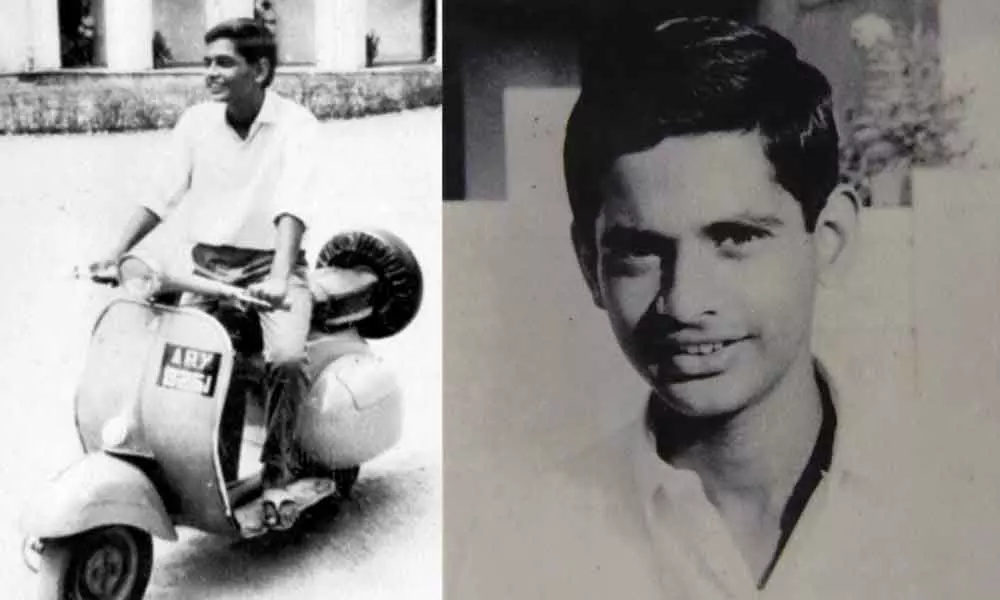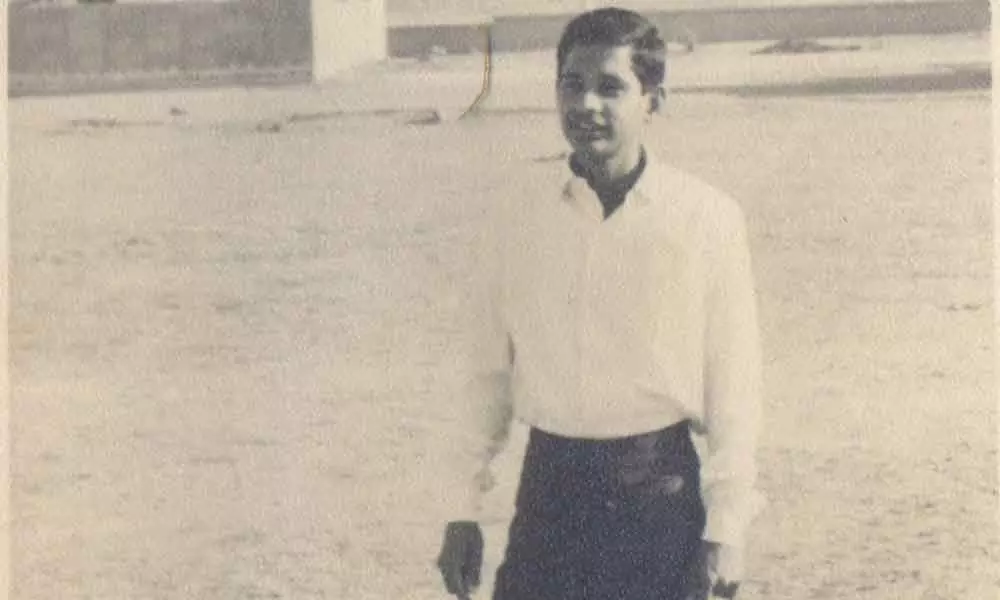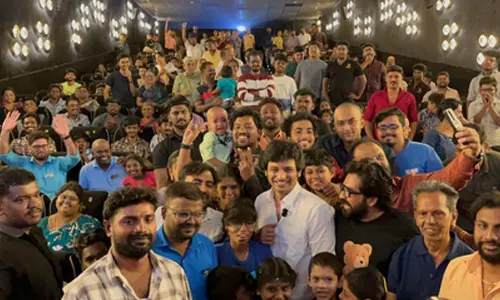Che Guevara of Osmania University: George Reddy
He was called the Che Guevara of Hyderabad. Fearless, stubborn and passionate, he was much loved by the students, who saw him as their leader. University colleagues saw him as this brilliant self-taught budding physicist. Adverseries were wary of him. Revolutionary student leader ‘George Reddy’ continues to evoke interest even 50 years after his brutal murder in 1972.
It is more than 47 years since George Reddy was murdered on April 14, 1972, behind Engineering College, Osmania University. Despite the passage of many years, despite the extremely short public life of the man and the lack of archival material around him, he lives on in articles, podcasts, biopics and memorabilia, particularly in regional languages. Young people are immensely curious about him. Is this because his was a tragic death? Is this because he is seen as someone, who demanded change without compromise? Or is it that his militancy is attractive in an age when this is dangerous?
George Reddy was born on January 15, 1947, in Palghat of an inter-caste, inter-religious, inter-region parentage. His father was from the Reddy landed gentry of Chittoor district and his mother was a Syrian Christian from Kerala, the daughter of a mother who was a headmistress of a school and a father who was a judge. Raghunath Reddy and Leila Varghese met while they were studying post-graduation in Presidency College of Chennai. At the outset, the marriage ran into stormy weather with the families, particularly, the Reddy family. Later, when George was barely eight years old, his parents separated. His father could have abandoned her, or she could have precipitated it with her stubbornness, but the fact is that Leila raised her five children on her own with no help from her husband or his family. When he finally died in 1960 when George was thirteen years old, she was not even informed of his death by his family. George and his siblings went from town to town wherever his mother and elder sister could find some work to maintain the family and educate the little children. The harshness of their childhood and the indifference of their immediate families to their plight were to lead George to abhor the discriminations of caste, religion and gender.
George joined the Osmania University campus in 1964, returned the next year to Nizam College to finish his graduation and came back to OU Science College in 1967 for his post-graduation and later, PhD. It was during this time that his thirst for justice came face to face with the brute force of the student wing ABVP. It virtually ruled the campus like a mafia. By 1970, it operated in the examination branch and influenced the registrar and the Vice-Chancellor. Home Minister Vengal Rao and Finance Minister K Vijayabhaskar Reddy found them useful allies too and encouraged them. George came into conflict with them over various issues – their ill-treatment of hostel and college Class IV employees, their corruption and interference in academic matters, their open abusive behaviour towards women students.
George was free with his fists in any situation where he thought the principles of natural justice were being violated. A stint of rustication led him to read and reflect on society and change. On his return to campus, his natural inclination towards anti-authoritarianism and anti-establishment politics and attitudes was channelised into a strong urge to bring about a revolutionary change in society. He formed study groups, he took up issues actively, he participated in student union elections. At the same time, he kept himself physically fit, working out in the gym, wrestling and other activities and pushing his friends to keep away from smoking and drinking. He continued his deep interest in academics, passing with flying colours in every examination. At that time, OU was going through a copying spree, but George refused to copy. When asked why, he replied, "I consider it below my sense of dignity and self- esteem."
All through, George continued to be his gentle self, kind and courteous to elders and women. "He walked very fast in those rubber chappals as if there wasn't time for the things he wanted to do in this world, but when he sat down to talk with you, it was as if he had all the time in the world," says a woman student of the times.
To his schoolmates, he was a bright student and a quick learner, an avid reader, library goer, film buff, and amateur poet. He had a rebellious and questioning nature, was defiant, and refused to be bullied. His college friends saw him as stubborn, pig-headed, a devil's advocate, uncompromising. He was a teetotaller, a loner, not a foodie, not a girl's man. He trained himself in boxing but had no other sporting interests. Academics came easily to him.
To his university colleagues, he was a brilliant self-taught budding physicist and a good physics teacher. He was described as disciplined, determined and persistent. He was a steadfast friend and protector, courageous, adventurous and bold. He was seen as empathetic to the poor, always extending a helping hand to them.
To his teachers and professors, he was a student of outstanding potential, who turned his back on an excellent international scientific career, for reasons they could not fathom.
To those who were associated with him in the Left student movement, he was a militant revolutionary thinker, charismatic leader, compelling conversationalist, challenging the corrupt status quo. An idealist and dreamer who led a frugal, spartan life, he was a comrade in arms with a heightened sense of fellowship.
His brother Cyril Reddy wrote, "George abhorred Hindutva and Brahminism. This was not due to his having read Ambedkar, Phule or Periyar, but arose out of his own life experiences where he witnessed the treatment meted out to my mother and our family by her husband and husband's family and relatives. George had two close Dalit friends from PUC onwards (1963) - Pratap and Hari, both of whom continued to be his friends and who were in contact with him till he was murdered. To the best of my knowledge, they never mentioned Ambedkar to him nor gave him any of Ambedkar's writings to read. George's political interests developed on seeing the mass student mobilisation of the Telangana movement in 1969 and reading about the Naxalbari and Srikakulam movements. It was then that he started reading Marxism and mobilising students and employees on the campus. He also developed gradual contact with Left intellectuals like KV Raghunath Reddy, Justice O. Chinnappa Reddy and others who gave him books by Western revolutionaries like Che Guevara and Frantz Fanon; they never gave him Ambedkarite literature... for George, it was an unconscious response based on his personal life and the brutal attacks by Hindutva forces on youth who wanted to fight for social change."
George was attacked several times by the ABVP gangs, but this did not deter him from continuing in his work despite warnings from his own friends. He was stabbed once in the abdomen in February 1972 and taken to Gandhi hospital. His friends told him, Slow down, you will die, and we will see your name on the walls. You are intelligent, you can become a research scholar and help people in other ways." George replied, "Just one man can help change society."
In barely two months, he was ambushed in broad daylight in front of a police posse by a gang of hired thugs and ABVP men and killed on April 14, 1972. The murder of George Reddy on that summer's evening when he was barely twenty-five years, was to have wide ramifications. The lives of his family were shattered. His mother Leila, barely fifty-six years old, was to die of grief within a few months. George's death was also to change the contours of the student movement in Osmania University, and thereby, the contours of the radical movement in Telangana and Andhra Pradesh. The right-wing combine was to be nearly wiped out in the following years. The unprecedented response from the student community around him stunned many. Who was George Reddy? He was no iconic film star. He had written no magnum opus, nor won a national or international title. He had no dynastic standing, nor was he in any political party. Born in Kerala, raised in Chennai, he had been in Andhra Pradesh for barely 10 years. Rarely had he more than a small change in his pocket at any time, and though he was neatly dressed, he had but two or three pairs of clothes. Yet, hundreds of students here who had not known George, both boys and girls, were drawn into the new movement. Their lives changed beyond comprehension.
George Reddy was to become more famous in death than he ever was in life.
Not surprisingly, George's favourite quote from Che Guevara was "Whenever death may surprise us, let it be welcome if our battle cry has reached even one receptive ear and another hand reaches out to take up our arms."
- The writer is a social activist and works for Hyderabad Book Trust


















